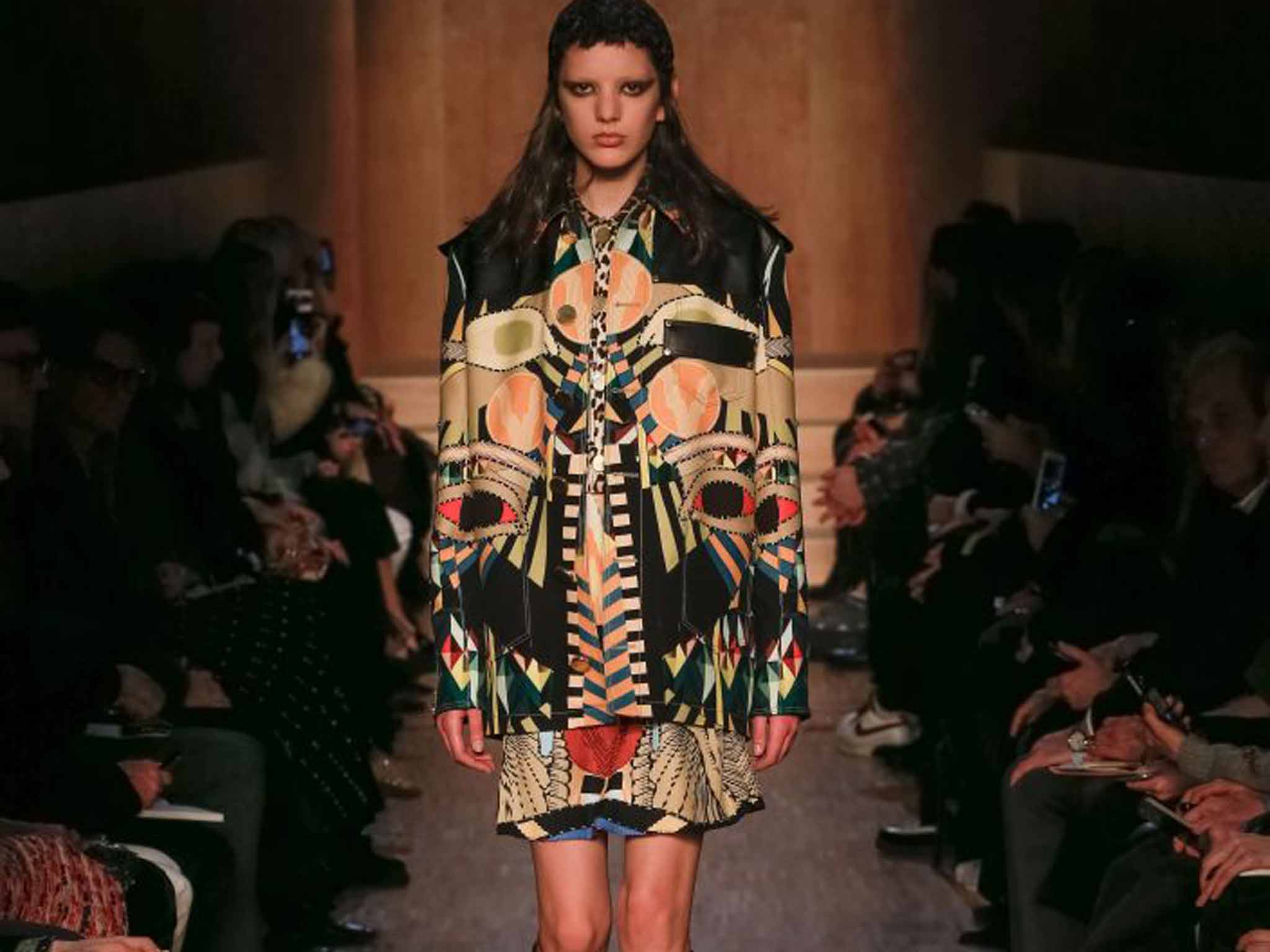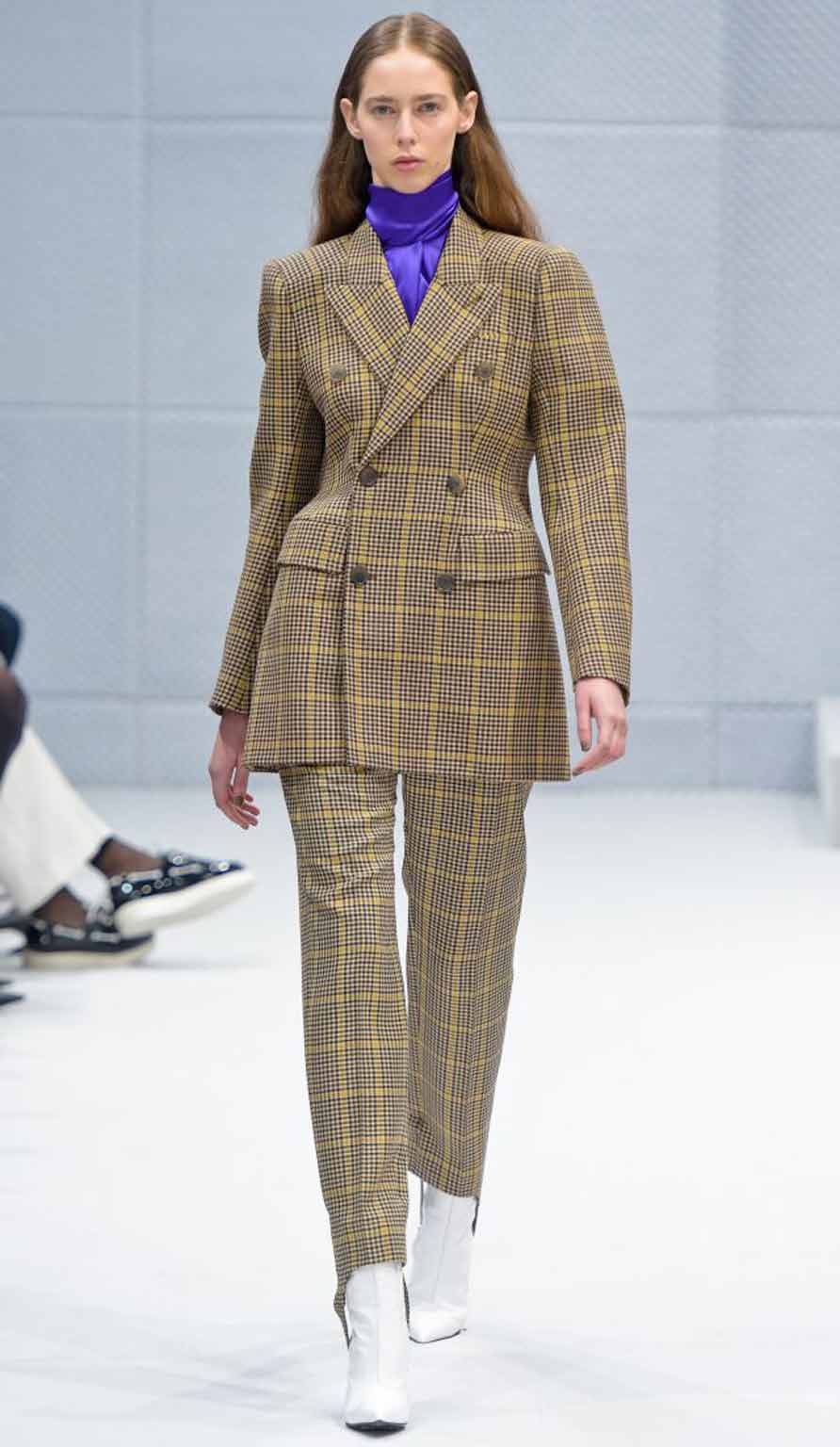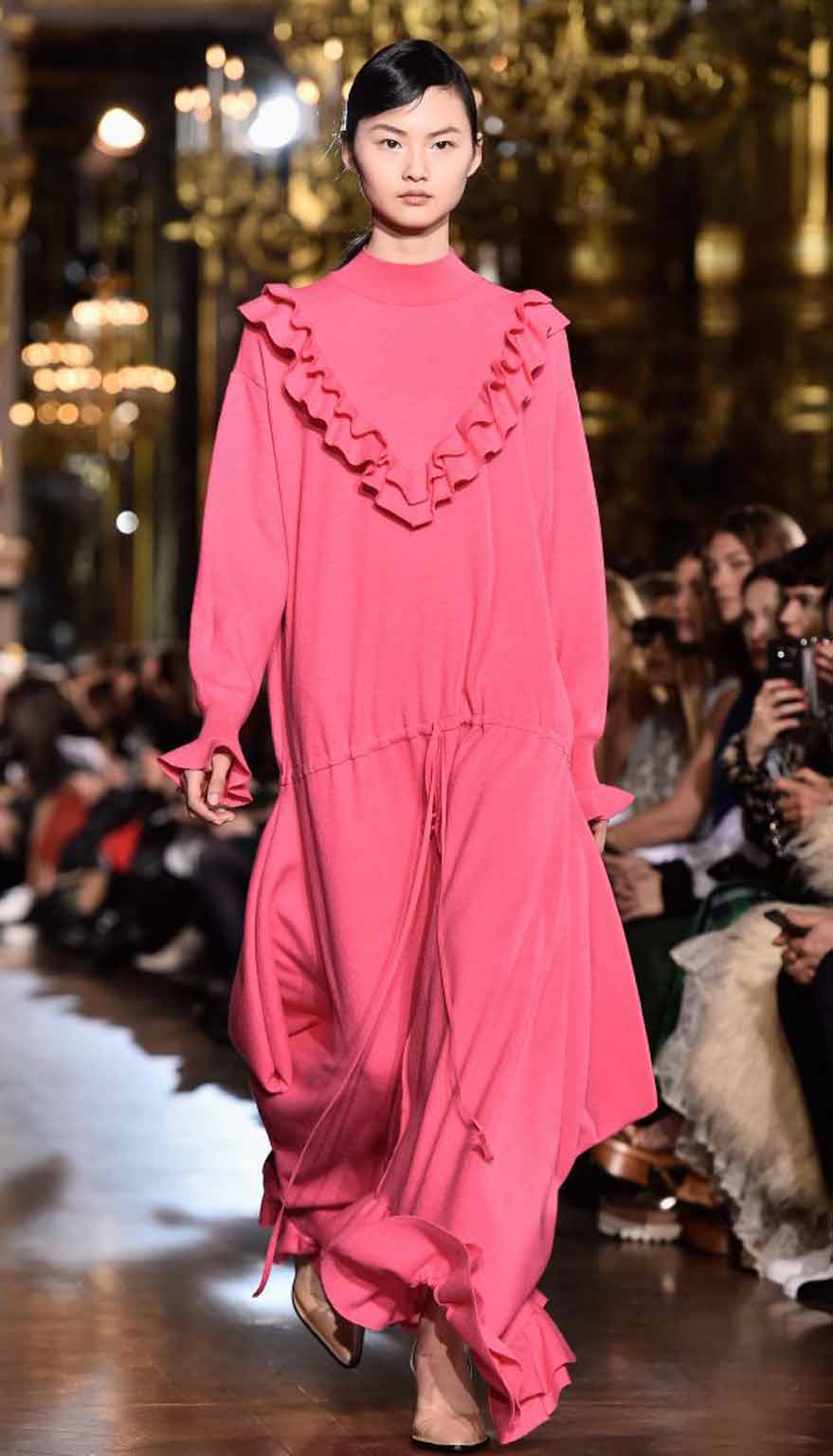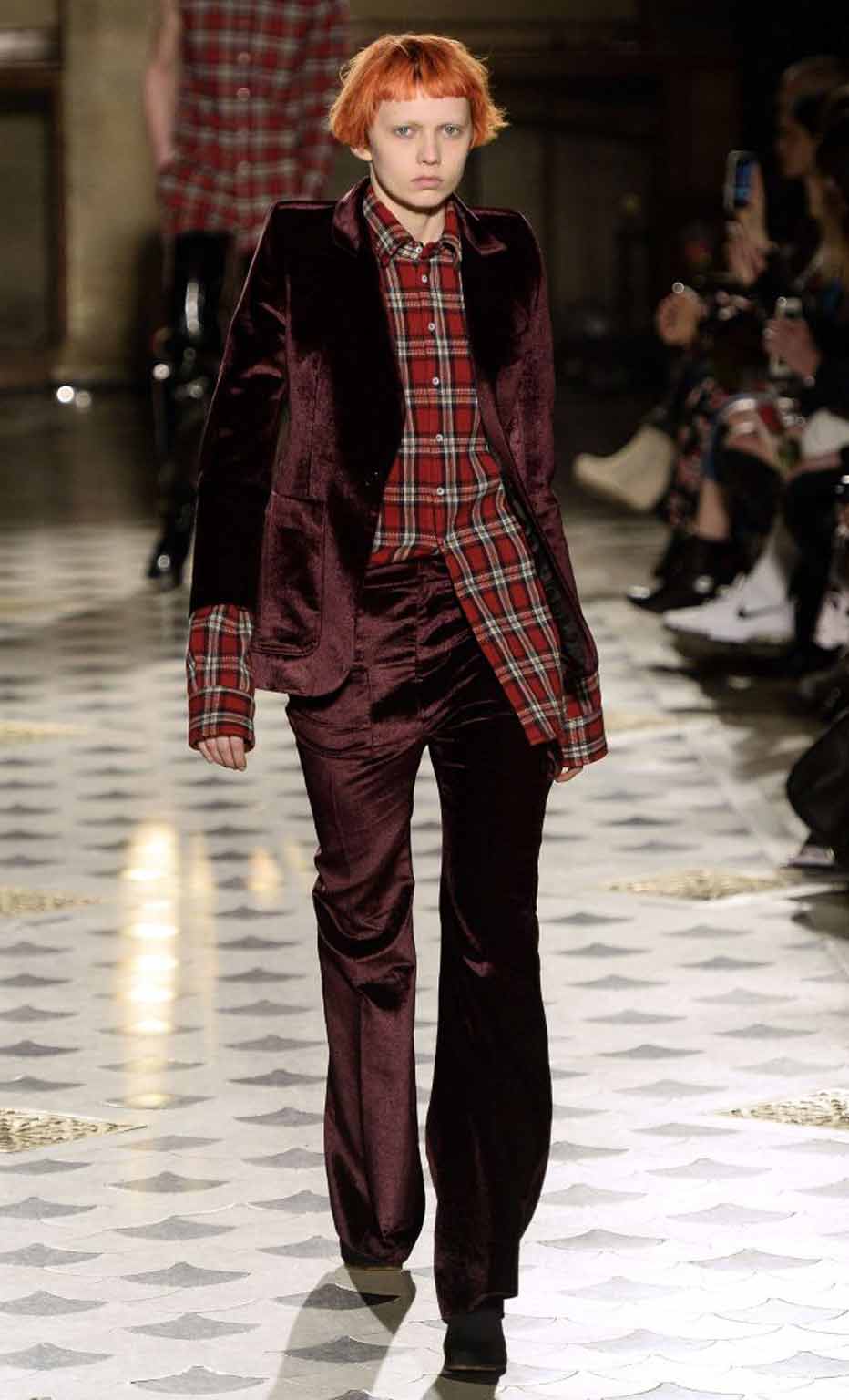Paris Fashion Week: The Balenciaga debut of Vetements designer Demna Gvasalia cemented his standing
Alexander Fury on the most feted – and most copied – figure in fashion

On Sunday, the 34-year-old designer Demna Gvasalia presented his Balenciaga debut – generally acknowledged to be the most hotly anticipated show of the autumn/winter 2016 season – in a nodule-nobbled room on a sound stage of the French television station Canal Plus. It was an “anechoic” chamber – meaning non-reflective, echo-free. Said spaces imitate infinite dimensions. They are insulated from exterior noise. They allow you to listen in pure silence.
How's that for loaded symbolism? That was the only thing, bar exhaustive press attention, guaranteed of Gvasalia's first show for the house. After Alexander Wang's creatively lacklustre but commercially strong three-year tenure, this was seen by many as Balenciaga's return to form. It was certainly a return to the avant-garde. The founder, Cristobal Balenciaga, was an irascible innovator who loathed the press and considered his hand-made haute couture clothing art. When approached to licence his name to ready-to-wear – the arena the label currently operates in, to the tune of a turnover exceeding £270m per annum – Monsieur Balenciaga declared he would not prostitute himself. After a fitful series of revival attempts under various designers in the mid-Nineties, the label was handed to Nicolas Ghesquière, who catapulted it once again to worldwide prominence. Seen by many as a contemporary counterpart to Cristobal in terms of influence and innovation, Ghesquière left Balenciaga in 2012. He now designs acclaimed collections for Louis Vuitton, and will show his latest on Wednesday.
Ghesquière's tenure both at Vuitton and Balenciaga was marked by their influence across the fashion sphere. In short, he is one of the most copied designers of the past 15 years: at one point a few years back, the social media website Tumblr hosted a page titled “Balenciaga did it first”. It's since been closed down, no doubt due to the striking similarities it exposed between Ghesquière's designs and subsequent collections by other names.

Ghesquière is still copied; but currently, it is Gvasalia whose identity is stamped across fashion. Gvasalia is the designer of Vetements, a much-feted but relatively little-sold label (contrast: Vetements has around 150 stockists worldwide; Balenciaga directly operates around 100 boutiques). Vetements' vêtements are oversized, muddled-up, a bit dog-eared, eminently wearable. They twist sportswear items such as bomber jackets, hooded sweatshirts and jeans: the latter, patchworked together from second-hand styles, sell out immediately internationally. It's not wholly original. The garments, by their very nature, are bog-standard – at first glance, the Vetements MA-1 bomber dominating the window of the Parisian boutique Colette looks like any other, bar the inflation of silhouette and price-tag. And there are also heavy echoes of the work of the Belgian designer Martin Margiela, in the over-scaling, and recycling, in the use of cheap materials and a sense of the pre-lived.

Vetements may be small, but it punches big. Its influence is seismic. If Balenciaga's anechoic chamber insulated the collection entirely from outside intrusion, Gvasalia's influence seems to have rung loud through many other designers' workrooms. It has rung in change. You saw shadows of Vetements vêtements in, for instance, the show of Stella McCartney. Her show notes extolled “signature Stella”, but there was something about the mash-up of streetwear staples – bomber jackets and down coats and elongated distressed denim – that felt very Vetements. So, too, did a note of naff Eighties retro, ruffled jabots on blouses and drawstring dresses. They looked desirable – precisely because they chimed with that status quo, rather than challenging it. McCartney was by no means unique – elsewhere trailing sleeves and outsize proportions and a mixed-up mashing of styles nods to Vetements. I'll state, again – in Tumblr fashion – that Margiela did this stuff first. But the stylistic reflections on numerous catwalks across the four fashion capitals are down, wholly, to the current popularity of Vetements.
That popularity will inevitably pass. It's the nature of fashion's beast. If you need proof of the swing of fashion's weathervane, look to Riccardo Tisci's Givenchy show on Sunday night. It was inspired by ancient Egypt, but rather than relics of a long-forgotten past, the clothes felt like a recent fashion moment well remembered, but nevertheless bygone, a moment of digital print and taut, tense, difficult-to-wear catwalk statements. Inside a Kafkaesque labyrinth of wood, models bounced and bounded about aimlessly, stumbling and losing their way, stretching out the progress of an already over-long show. You felt like Tisci lost his way here too, bogged down in digital prints of Sanskrit mandalas and crypto-Egypto Horus eyes and hieroglyphs that wound up looking like something from the interior of Luxor Las Vegas rather than the real deal. The appealing aspect of Vetements, for many, is its resolute reality – it's founded in real clothes (hence the name). This Givenchy show felt like hard work: to design, probably. To watch, definitely. To wear, certainly. What it didn't feel was connected to fashion's here and now.

The nature of fashion at Fashion Week, with schedules relentlessly butting shows against one another, is that you compare and contrast. Anything after Demna Gvasalia's Balenciaga show on Sunday morning suffered as a result. Because, sealed away from the noise of the world, inside that anechoic chamber, we saw something special.
It shouldn't have worked. Vetements aesthetic, on paper, is diametrically opposed to Balenciaga. Balenciaga is aristocratic, refined, exquisitely made. Vetements is focused on streetwear, on humdrum everyday garments and humble fabrics. “At Vetements it's always very much: 'it's ugly, that's why we like it',” Gvasalia once told me. There was often an ugliness perceived in Cristobal Balenciaga's clothing, a couturier less inclined to create neat little wasp-waisted suits and more likely to turn a woman into a balloon of taffeta or a tube of gazar. That was a fabric invented for him, with the sheen of silk and a holding power roughly equivalent to corrugated cardboard.
What Gvasalia did, however, was to marry his pragmatism with Balenciaga's patrician refinement and create something singular. It had a whiff of Vetements, sure; but also a dose of Balenciaga, in silhouettes tugged from Horst pictures (the concave-stomached couture stance, of models hunched with hands on hips to define a whittled waist, which Gvasalia dubbed the “C-line”) and an excellence of materials and construction. “For me it wasn't so much about clothes,” said Gvasalia. “It was about finding out about Cristobal Balenciaga's method of designing, of making clothes. This method for me was more a reference, rather than certain garments, or known shapes.”
But those were there. This was embedded in Balenciaga. The opening section, of suits with basque hips (some fused into jackets) was sober, surprising. An evening excursion in embroidery was arresting. Flowing silk dresses in Balenciaga's tent shapes were referential – reverential, but nevertheless felt desirable and new. Everything did, in actual fact. I couldn't help but ally it all to Balenciaga himself, sculpting fabric into the sublime. Here, by cross-breeding modern sportswear with the hauteur of couture's great maître, Gvasalia manipulated the commonplace to become extraordinary. The fusion felt like something we'd never seen before.
I'm sure we'll see plenty more of it, though, on catwalks across the world. But remember: Balenciaga did it first.
Join our commenting forum
Join thought-provoking conversations, follow other Independent readers and see their replies
Comments